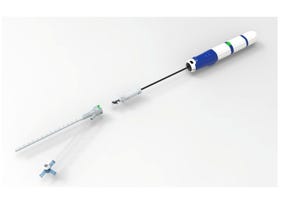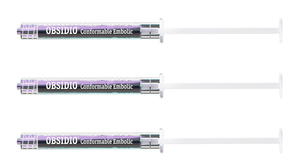August 1, 1998
Medical Device & Diagnostic Industry Magazine
MDDI Article Index
An MD&DI August 1998 Column

WASHINGTON WRAP-UP
—A recent Mentor Corp. consent decree draws in corporate subsidiaries and personnel
—Faster, better-targeted quality inspections
James G. Dickinson
There was a time when FDA inspectors might show up without warning, disrupt operations, and nitpick every little thing they could find. They could open a paperwork exchange between the company and the agency that could go on for months or even years, punctuated by more inspections and disruptions.
Those days are gone. Instead, FDA is simply holding CEOs increasingly accountable for their companies' regulatory compliance. The leading example of this is the historic federal court consent decree signed in May by the agency and Mentor Corp. (Santa Barbara, CA). Signatories included the company's breast implant subsidiary, Mentor Texas, Inc. (Irving, TX), and, individually, Mentor Corp.'s CEO Christopher J. Conway and president Anthony R. Gette.
The decree represents the middle ground between FDA's tolerating GMP problems on the one hand and slapping $10,000-a-day civil penalties on the company on the other. Mentor must now pay serious attention to eliminating its GMP problems under a tight schedule monitored by an outside, company-paid auditor reporting to FDA.
This is the first time FDA has applied such a measure against a medical device company, although similar tactics have been used in other areas regulated by the agency. The twist in the Mentor decree is that, despite a record of chronic GMP problems at the company's Irving facility, FDA is allowing Mentor to continue marketing the affected products. There are two reasons for this conditional tolerance: None of the GMP problems are considered likely to affect patient health, and a market shortage could result if FDA shut down production.
Shutting down the plant, however, remains an option if Mentor falters in its corrective-action plan, which has performance deadlines as few as 15 days apart. The plan demands that the company completely document its quality assurance and quality control procedures, revalidate its processes, upgrade its device master records, validate all its manufacturing processes, and submit to annual comprehensive GMP inspections by an expert consultant who will report results simultaneously to Mentor and FDA.
The consent decree permits FDA to make its own comprehensive inspections, including taking photographs, at any time. The inspections will be made at Mentor's expense, at base rates of $55.06 per hour for FDA inspectors and $65.99 per hour for analytical and review work, plus travel and per-diem expenses. In addition, copies of the decree must be provided to all affected employees or posted in "conspicuous places frequented by and readily accessible to employees."
The decree's terms can be unilaterally revised by FDA if the agency determines that Mentor is not in compliance. Such revisions could include production shutdown, product recall, and additional recordkeeping and documentation requirements.
Also in May, FDA made public a warning letter written to Mentor CEO Conway on February 28, 1997. In a presumably related incident, similar GMP deficiencies were found at another Mentor subsidiary—intraocular lens maker Mentor Caribe (Caribe, Puerto Rico).
In that letter, FDA district director Samuel Jones cited several quality assurance, validation, and standard-operating-procedure deficiencies. He also expressed "greatest concern" over incomplete validation of the manufacturing process, especially the management's inability to "adequately explain the observed increase in process deviations for haptic thickness in single-piece lenses." Jones suggested that minor process changes at one processing step, perhaps due to a change in supplier, procedure, or equipment, "may unpredictably result in more significant deviations downstream in the process." There seemed to be "a significant and ongoing process instability of currently indeterminate cause" at Mentor Caribe, Jones observed.
"The various in-process inspections, and the 100% final inspection of product may mitigate some of the effects of such a process problem, but cannot be accepted as a substitute for implementation of a properly validated, stable and predictable manufacturing process," Jones wrote.
"We recognize," he continued, "that all manufacturing processes are subject to some irreducible deviations. However, in order to demonstrate that your process has been validated, the rates of observed in-process defects may not be demonstrably increasing over time. Nor ought they be subject to radical variability between work orders of like products."
This was an unusual warning letter, especially given its belated release to the public, so close to the signing of the consent decree with Mentor. The decree involved a different subsidiary but the same parent company and CEO.
Although the GMP problems dealt with in the two documents were ostensibly isolated incidents at very different facilities, they occurred under the same corporate umbrella and in roughly the same time frame. For the new FDA, this was sufficient to focus attention on one individual—the CEO.
No longer does the agency view subsidiaries as stand-alone operations for enforcement purposes, even though they may have enough autonomy within the corporate family to operate that way. FDA's more inclusive enforcement strategy has been steadily evolving for most of the 1990s. Companies will see a lot more of it now that government-wide belt-tightening has forced the agency to do more with less. Increasingly, FDA will look to see whether GMP problems in a subsidiary indicate a systemic problem in the corporate culture. FDA's leaders believe it costs less to enlist the CEO's help in taking remedial measures that affect a corporation's whole structure than to deal with separate problems as they arise. The wholesale approach also better protects public health and safety, which is FDA's main concern.
The trouble with this approach is getting and holding a CEO's attention. Although CEOs bear ultimate individual responsibility for their companies under the law, they are not appointed to work on regulatory compliance, usually lack adequate training and interest, and typically delegate the responsibility to others.
FDA has long been concerned that this delegation of responsibility for regulatory compliance goes too far down the line. Responsibility often lands on low- or mid-level managers who lack the authority and resources to keep the company's operations within FDA's expectations. Increasingly, the agency will leapfrog over the corporate employees designated to handle regulatory affairs to focus on the company's CEO—especially if it perceives a systemic pattern to GMP problems.
While doing so, FDA will likely contact all of the affected individuals in the company, bringing them into its strategy at the same time. For example, Jones's warning letter to Conway was copied to the president, vice president for operations, and RA/QA director at Mentor Ophthalmics (Santa Barbara, CA). It was also sent to the parent corporation's RA/QA/legal affairs vice president and RA/QA director. Mentor Caribe's plant manager also received a copy.
Of course, even though FDA wants CEOs to give its warning letters their full and undivided attention, it won't be easy. A warning letter written to Stryker Endoscopy president William Enquist on April 23, 1998, illustrates the point. An inspection two months earlier had found violations of the quality system regulation that included inadequate staffing, 57 medical device reporting complaints that had been filed with FDA after the 30-day time limit, and inadequate documentation. Vice president Carlos Gonzalez wrote FDA about what the agency's warning letter acknowledged were adequate measures "immediately taken," but the agency still issued the letter to Enquist "because of the nature of the deficiencies found."
In other words, the company's problems were delegated to a subordinate for handling, and the job was done well, but FDA wanted Enquist to continue to pay attention to the problem. Just as letters written to FDA's commissioner are usually delegated to the operational-level official the company is trying to avoid, so will FDA's warning letters meet the same fate at device companies. FDA's challenge will be to break through that barrier—preferably before it has to resort to the attention-getting technique it finally used at Mentor.
FDA's Center for Devices and Radiological Health is developing a new inspection guide for field investigators that will target seven subsystems identified in the quality system regulation. The change will make FDA inspections of device manufacturers faster, more focused, and better harmonized with European inspections, according to Tim Wells, a reengineering inspection team leader for CDRH. A draft of the inspection guide became available in June and was followed by an open public meeting.
CDRH director Bruce Burlington would like to see faster and more-frequent inspections to try to meet FDA's statutory mandate of biennial inspections for medical device manufacturers. Wells's team had been meeting with an ad hoc industry group through FDLI for several months to gain input. This is another example of the new, user-friendly FDA—asking industry how the agency should conduct inspections.
The draft guide will serve as a road map for investigators to evaluate the following seven subsystems:
Design controls.
Corrective and preventive actions.
Management controls.
Production and process controls.
Materials (components) controls.
Facilities and equipment controls.
Document, record, and change control.
The industry group warned FDA against including in the guide an encompassing list of questions investigators could ask to assess the subsystems. Wells says the agency acknowledged that efficiency and time savings in inspections could be lost if those questions were included.
Most inspections should not have to evaluate all seven subsystems, many of which dovetail into others. For example, an investigator evaluating the subsystem "production and process controls" may review a sterilizer's validation. It would be hard to assess the sterilizer without also looking into the equipment and calibration under the subsystem "facilities and equipment controls."
A risk assessment should take into account what subsystems need to be evaluated, especially for firms with good compliance histories or those manufacturing low-risk products.
Wells says the new inspection process will be more aligned with Europe's "top-down" approach but with more-intensive record checking. This is a move away from FDA's traditional bottom-up approach, which usually begins with investigators poring over complaint files.
"In the past, we concentrated on the nonconformances," Welles says. Although the new program may still look at nonconformance, it will also assess whether the firm did the right thing when it found a nonconformance. Under the draft program, FDA investigators could look into corrective and preventive actions, which would include complaints and servicing, to assess whether the firm's system for taking action worked and was based on the risks and needs of the situation.
To increase the number of firms it can inspect, FDA will terminate an inspection early if it is apparent that a firm's systems are out of control, according to Phil Frappaolo, deputy director in CDRH's Office of Compliance. In these instances, the inspection would be written up as "official action indicated," leading to a warning letter or other regulatory action.
Comments from the public meeting and other sources will be taken into consideration before the agency finalizes the inspection guide, Wells says. A pilot test in the field will also be completed and assessed before the new inspection program is implemented.
Copyright ©1998 Medical Device & Diagnostic Industry
About the Author(s)
You May Also Like


